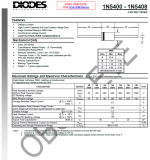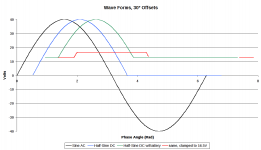GoHardrGoHome
Member
- Joined
- Apr 26, 2019
- Threads
- 2
- Messages
- 21
Ok, I went out and stripped back the shrink tube on the wiring and actually found two diodes connected in series. One very near the engine and the other about one foot away.
With the engine off, I checked both diodes individually and they only allow current in the direction of the battery. I tried to identify the diodes but only found numbers on Diode No. 2 (see attached diagram). With engine running at about 1/2 throttle, I then checked the voltage at the battery.
On the DC scale it was fluctuating between 2 and 15.5 VDC. I then decided to check it on AC scale just out of curiosity... 34 to 190 VAC!!
After running for about 5 minutes the diodes were very warm to the touch.
With the engine off, I checked both diodes individually and they only allow current in the direction of the battery. I tried to identify the diodes but only found numbers on Diode No. 2 (see attached diagram). With engine running at about 1/2 throttle, I then checked the voltage at the battery.
On the DC scale it was fluctuating between 2 and 15.5 VDC. I then decided to check it on AC scale just out of curiosity... 34 to 190 VAC!!
After running for about 5 minutes the diodes were very warm to the touch.


